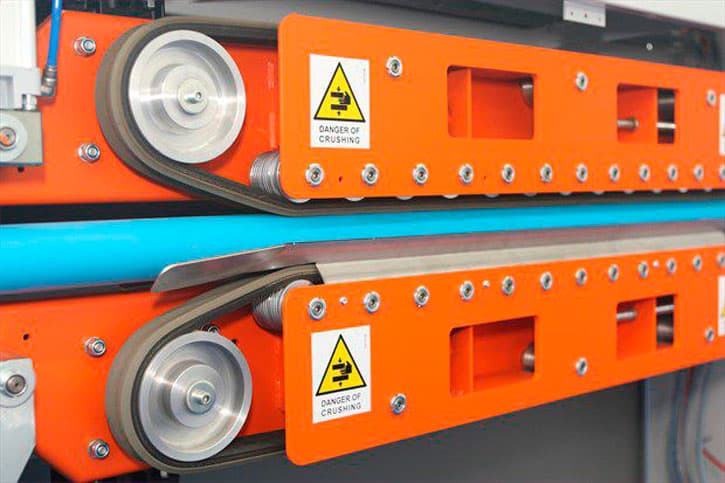Gary’s Safety Tips
G’day, my mates! It’s great to be here today to talk about something that’s really important, and that’s the potential risks of not having a Safe Work Method Statement (SWMS). As someone who’s been in the business game for a while now, I can tell you that workplace safety is no joke, and if you’re not taking it seriously, you’re setting yourself up for failure.
Let’s get fair dinkum for a sec here. Accidents can happen at any workplace, and they can happen fast. One minute you’re going about your business, and the next thing you know, someone’s hurt or worse. It’s not something that anyone wants to think about, but it’s a reality that we all have to face. That’s where SWMS comes in. It’s a document that outlines the risks and hazards associated with a particular job or task, and it sets out the steps that need to be taken to minimise those risks and hazards.
Now, you might be thinking to yourself, “Gary, why do I need a SWMS? I’ve been doing this job for years, and I know what I’m doing.” Well, my mate, that’s exactly why you need a SWMS. When you’re doing something on autopilot, it’s easy to overlook potential hazards or risks. A SWMS forces you to stop and think about what you’re doing, and it gives you a plan of action to follow if something goes wrong.
But let’s be real here, not having a SWMS isn’t just a risk to your workers’ safety, it’s a risk to your bottom line. Work-related injuries can cost you big time, both in terms of lost productivity and in legal costs if you’re found to be at fault. A SWMS helps you to identify potential hazards and risks, and it gives you a plan of action to minimise them. By taking steps to prevent accidents from happening in the first place, you’re protecting your business and your workers.
Another thing to keep in mind is that having a SWMS isn’t just a box-ticking exercise. It’s something that needs to be reviewed and updated regularly. As your business evolves, new risks and hazards will arise, and it’s important to stay on top of ’em. By reviewing and updating your SWMS, you’re showing your workers that you take their safety seriously, and you’re also staying compliant with workplace health and safety regulations.
Now, I know that some of you might be thinking, “Gary, this all sounds grouse, but I don’t have the time or resources to create a SWMS.” Well, my mate, let me tell you, you can’t afford not to. There are plenty of resources out there to help you create a SWMS, and there are even online tools that can do it for you. It might take a little bit of time and effort upfront, but trust me when I say that it’s worth it.
And finally, I wanna talk about the culture of safety in the workplace. Having a SWMS is just one part of creating a safe workplace. It’s important to create a culture of safety, where everyone feels comfortable speaking up if they see something that’s not quite right. This means providing regular training and education, and encouraging open communication between workers and management. When everyone is on the same page about workplace safety, accidents are less likely to happen.
In conclusion, my mates, not having a Safe Work Method Statement is a risk that you can’t afford to take. By creating a SWMS, reviewing and updating it regularly, and fostering a culture of safety in the workplace, you’re not only protecting your workers, you’re also protecting your business. Remember, workplace safety isn’t something that you can afford to overlook, and by taking it seriously, you’re setting yourself and your workers up for success.
Now, I know that creating a SWMS can seem daunting, but it doesn’t have to be. There are plenty of resources out there to help you get started, such as Safe Work Australia and your state or territory’s work health and safety regulator. These organisations can provide you with templates, guidance, and advice on creating a SWMS that’s tailored to your specific workplace and industry.
It’s also important to involve your workers in the SWMS process. After all, they’re the ones who are most familiar with the tasks and hazards associated with their jobs. By consulting with your workers and getting their input, you’re not only creating a more comprehensive SWMS, but you’re also showing your workers that you value their safety and input.
In addition to creating a SWMS, it’s important to provide your workers with the appropriate training and equipment to carry out their tasks safely. This includes providing personal protective equipment (PPE) such as hard hats, safety glasses, and gloves, as well as training on how to use equipment safely and how to identify and report hazards.
And let’s not forget about the importance of regular safety inspections and audits. By regularly inspecting your workplace for hazards and risks, you can identify and address potential issues before they become a problem. This not only helps to keep your workers safe, but it also demonstrates your commitment to workplace safety to regulators and other stakeholders.
In summary, creating and maintaining a Safe Work Method Statement is essential for any business that wants to protect its workers and bottom line. By taking the time to identify potential hazards and risks, and developing a plan to mitigate them, you’re not only meeting your legal obligations, but you’re also demonstrating your commitment to workplace safety. So, don’t wait until an accident happens to take action – start creating your SWMS today and make workplace safety a top priority for your business.
Cheers,

![]()






